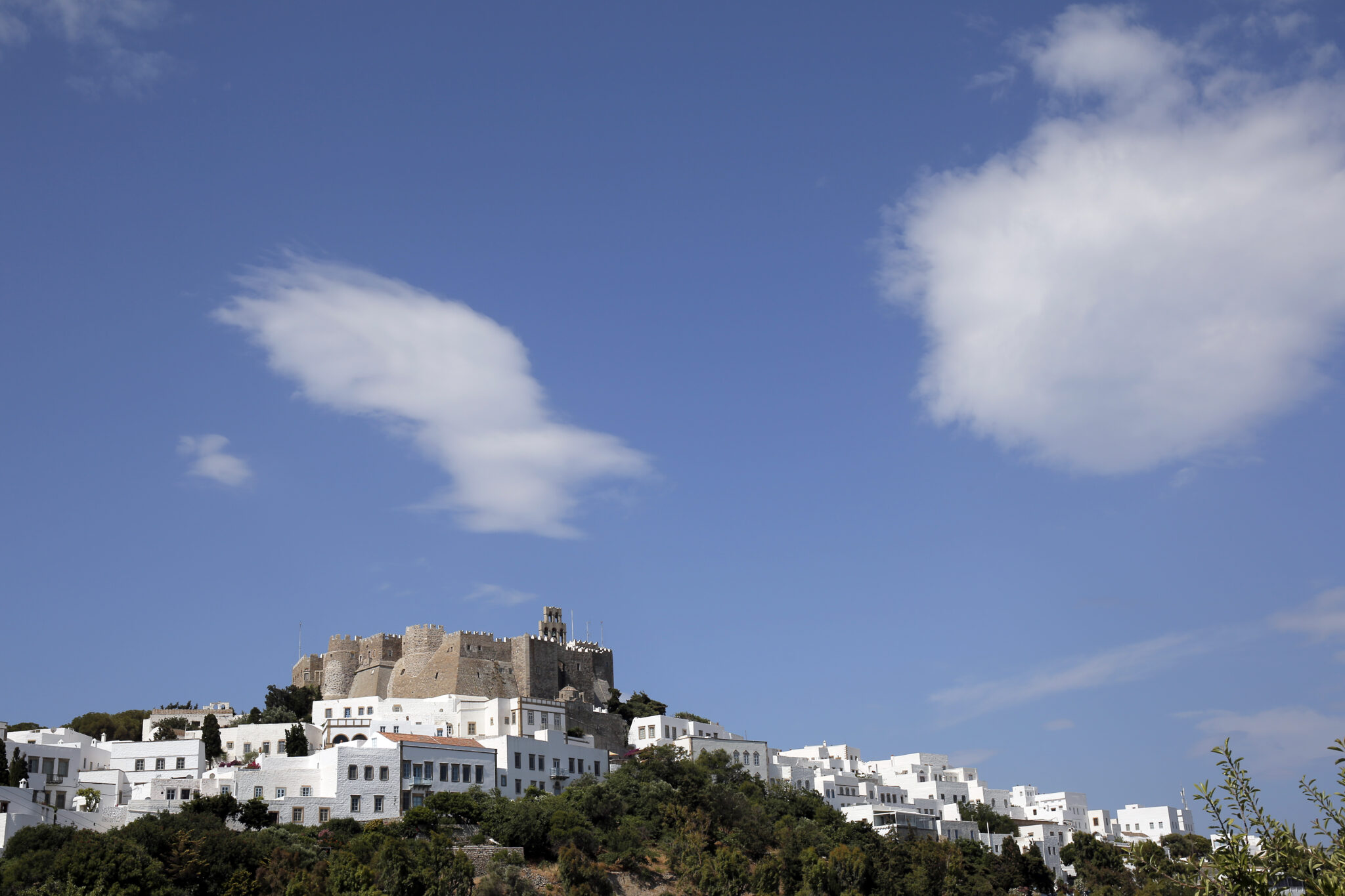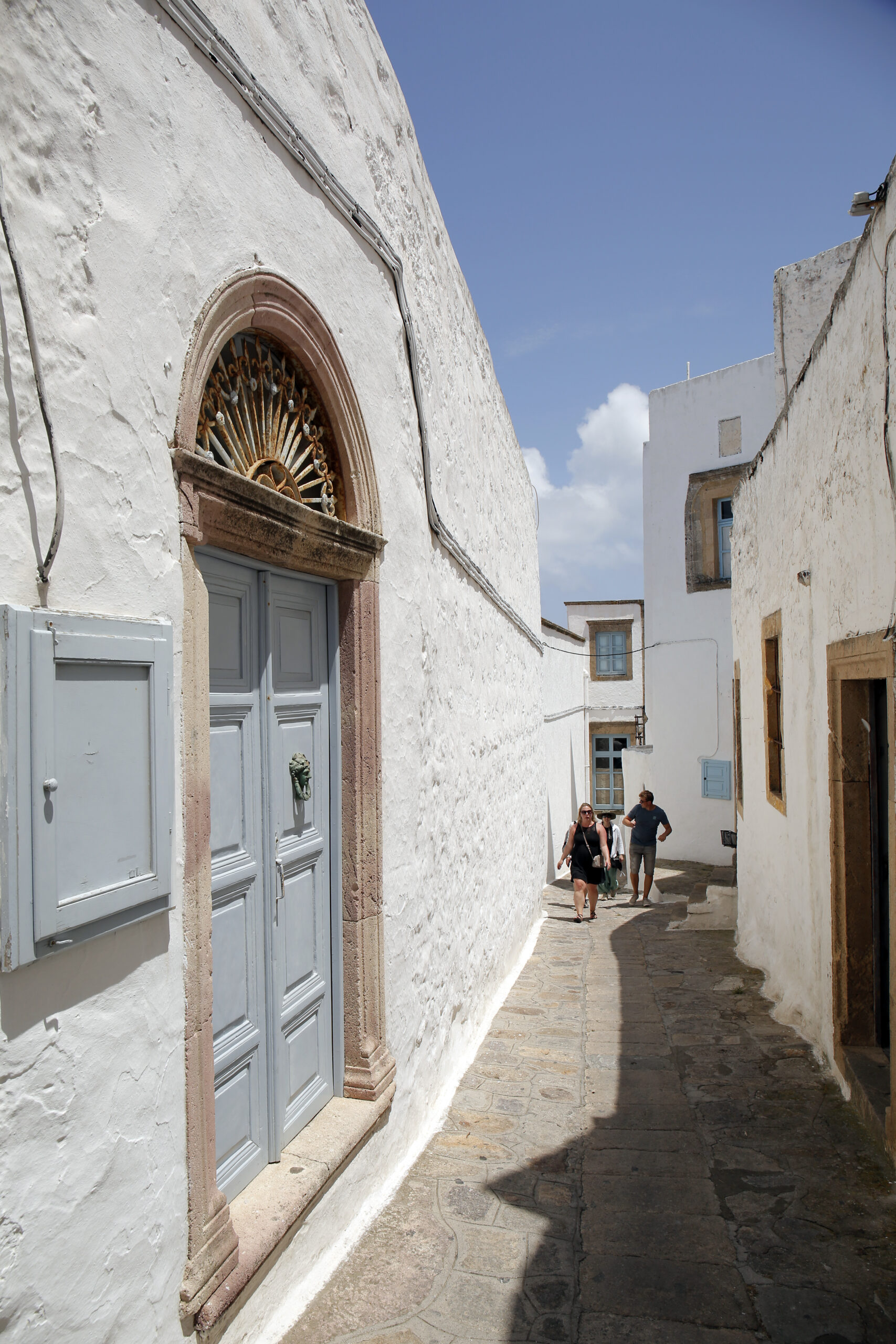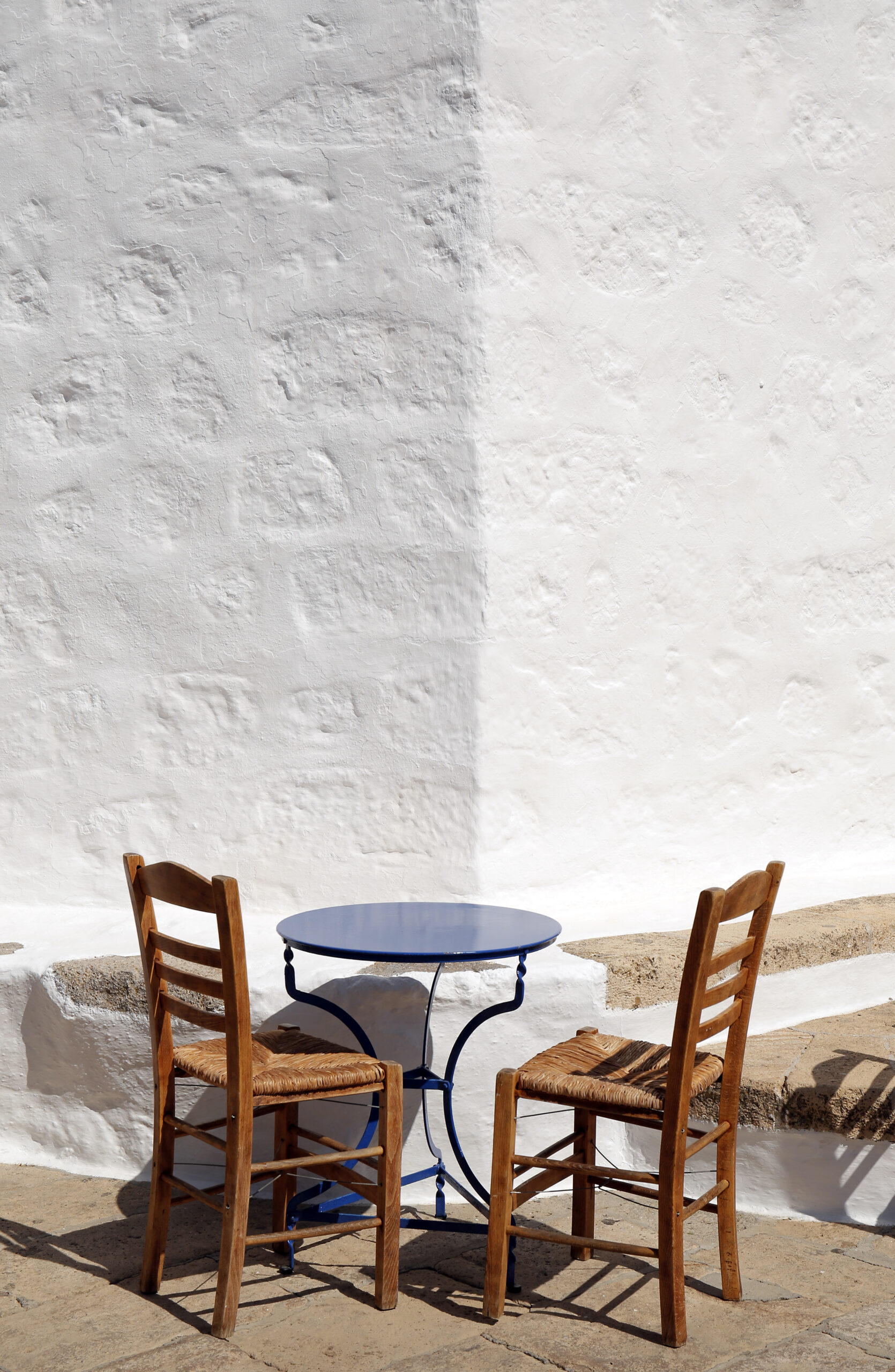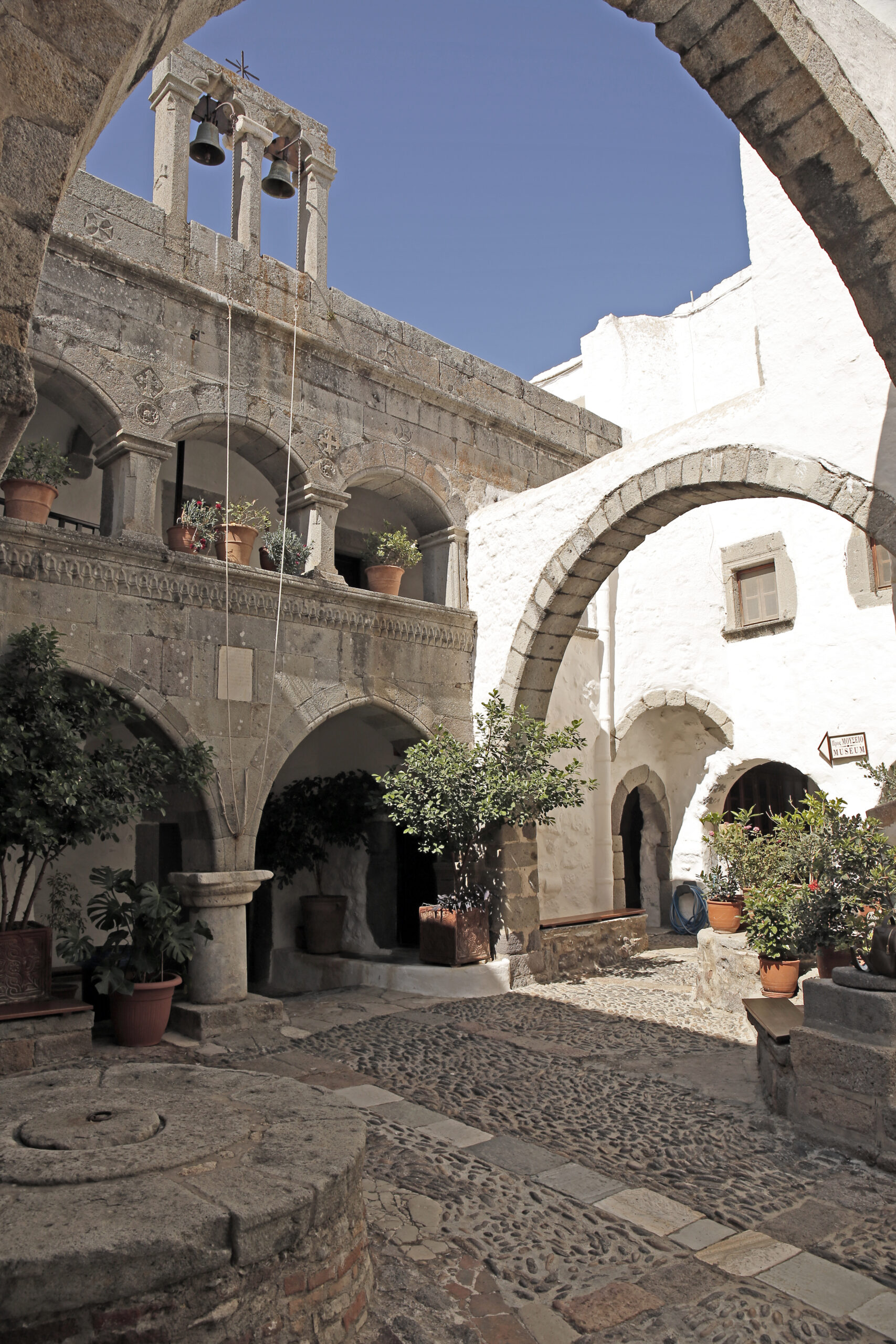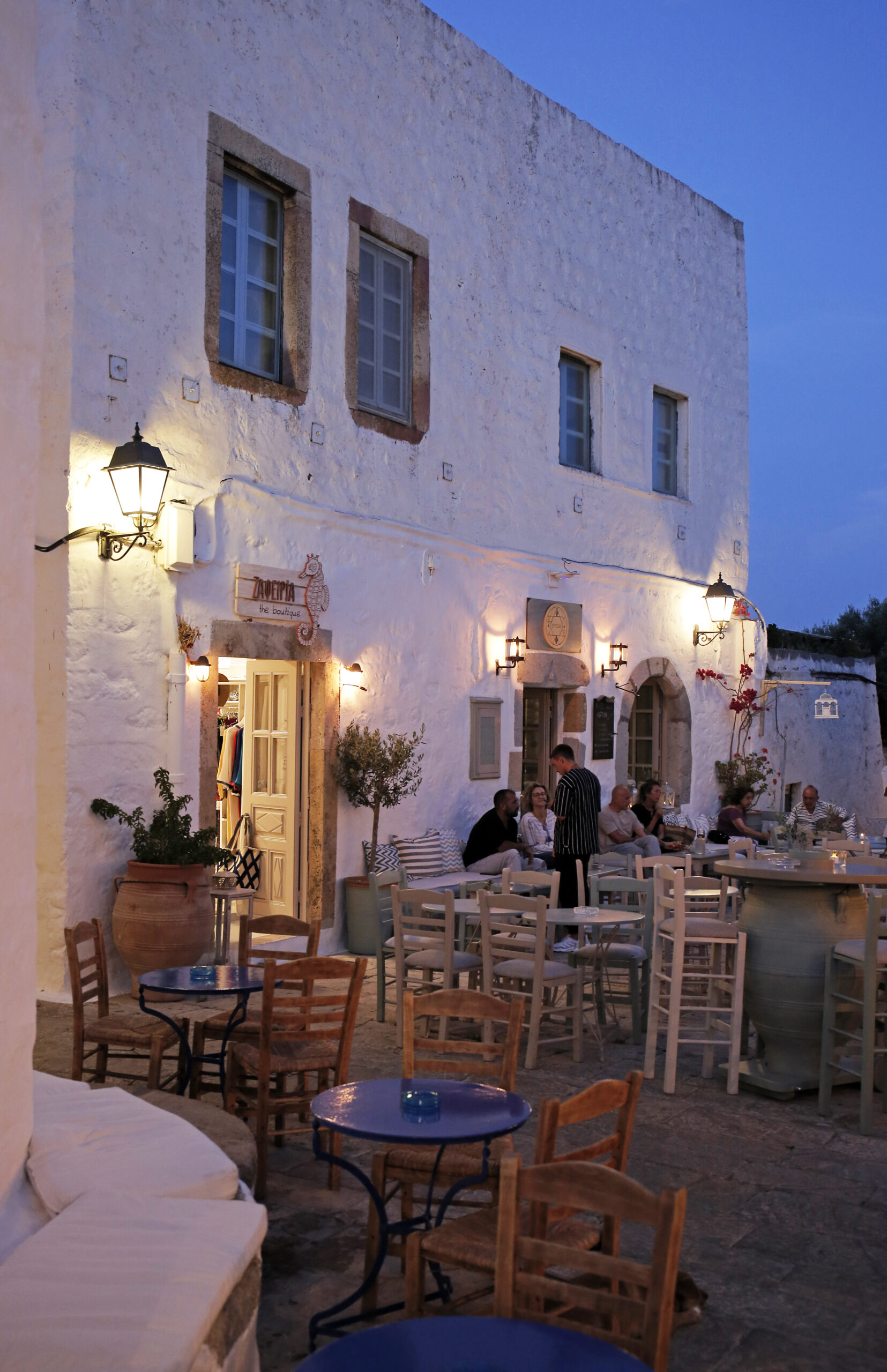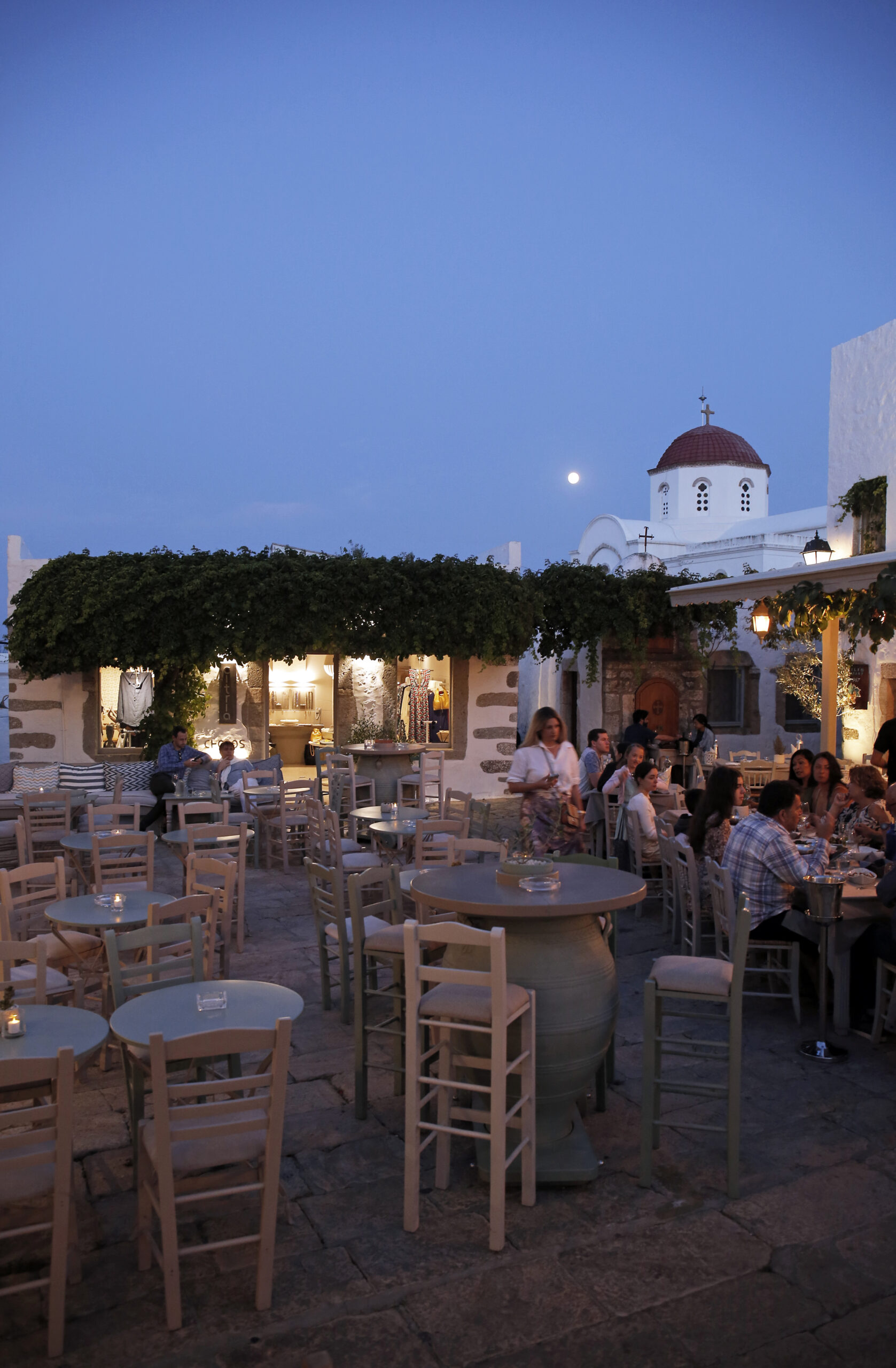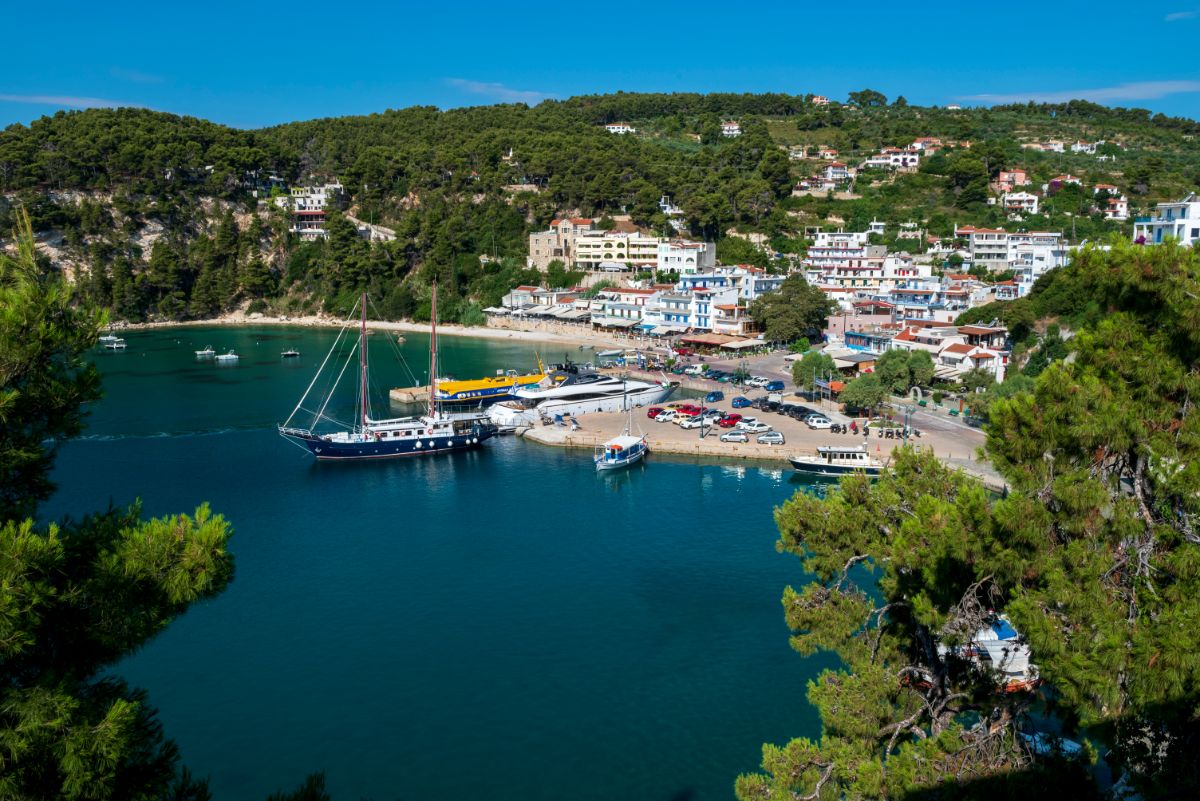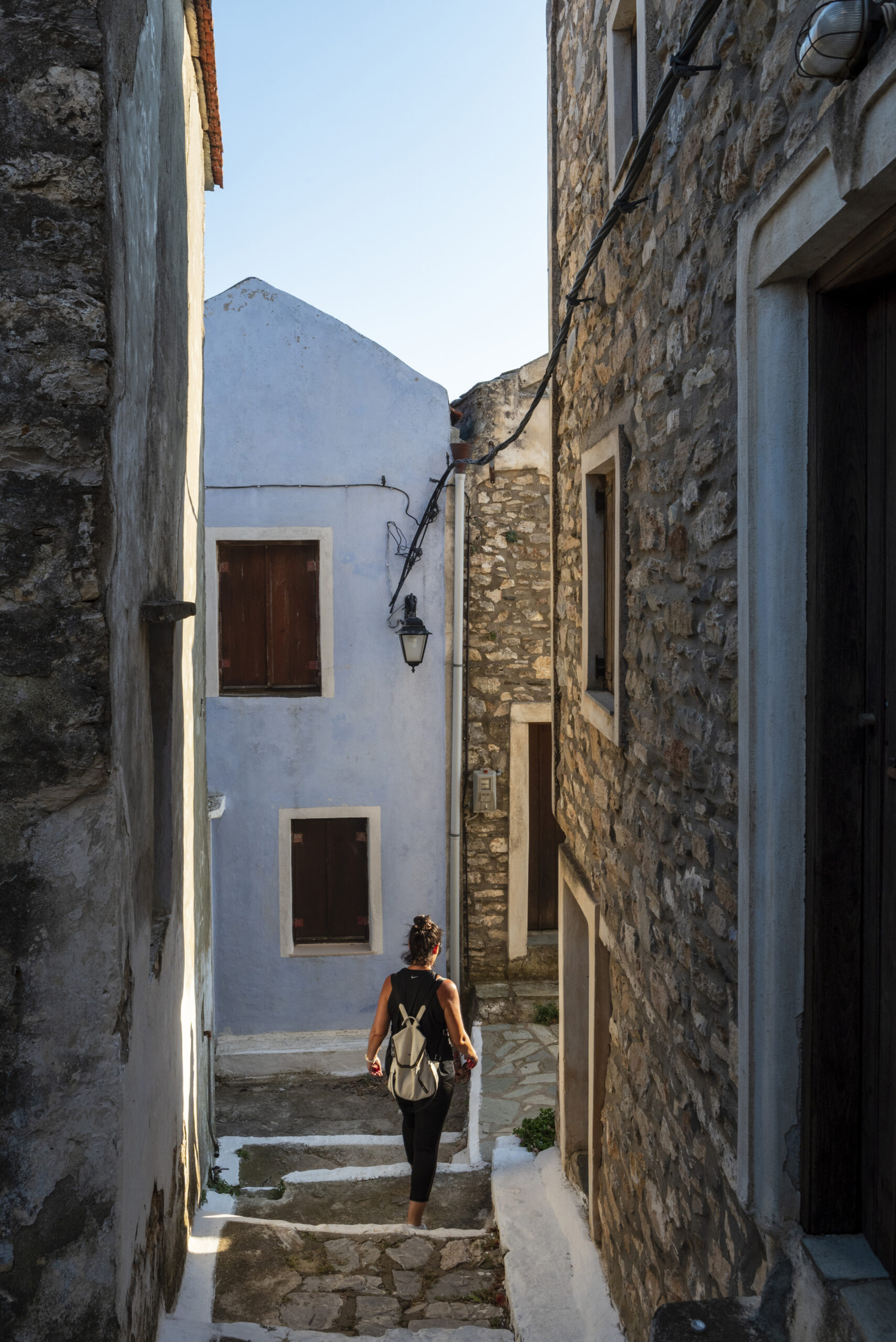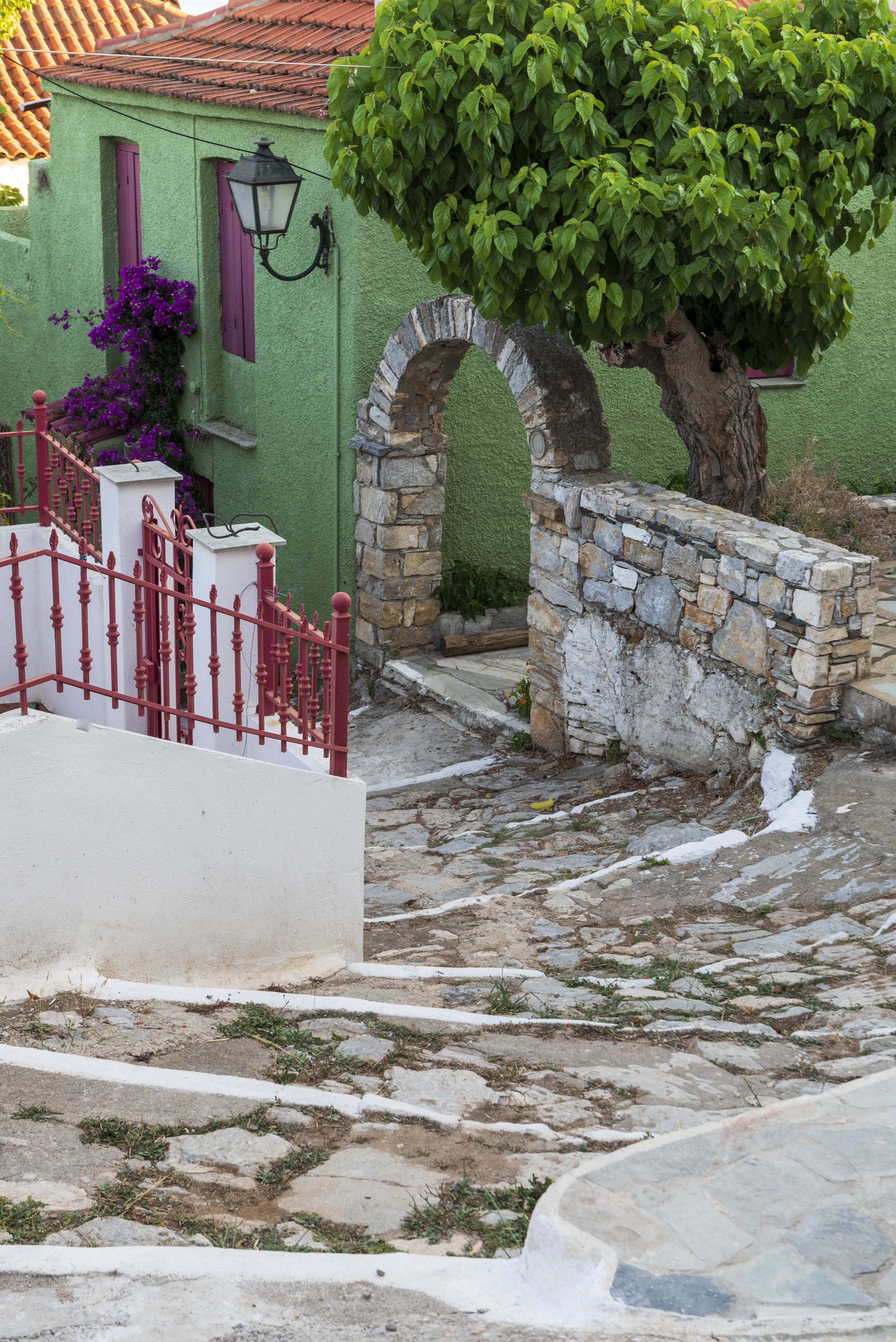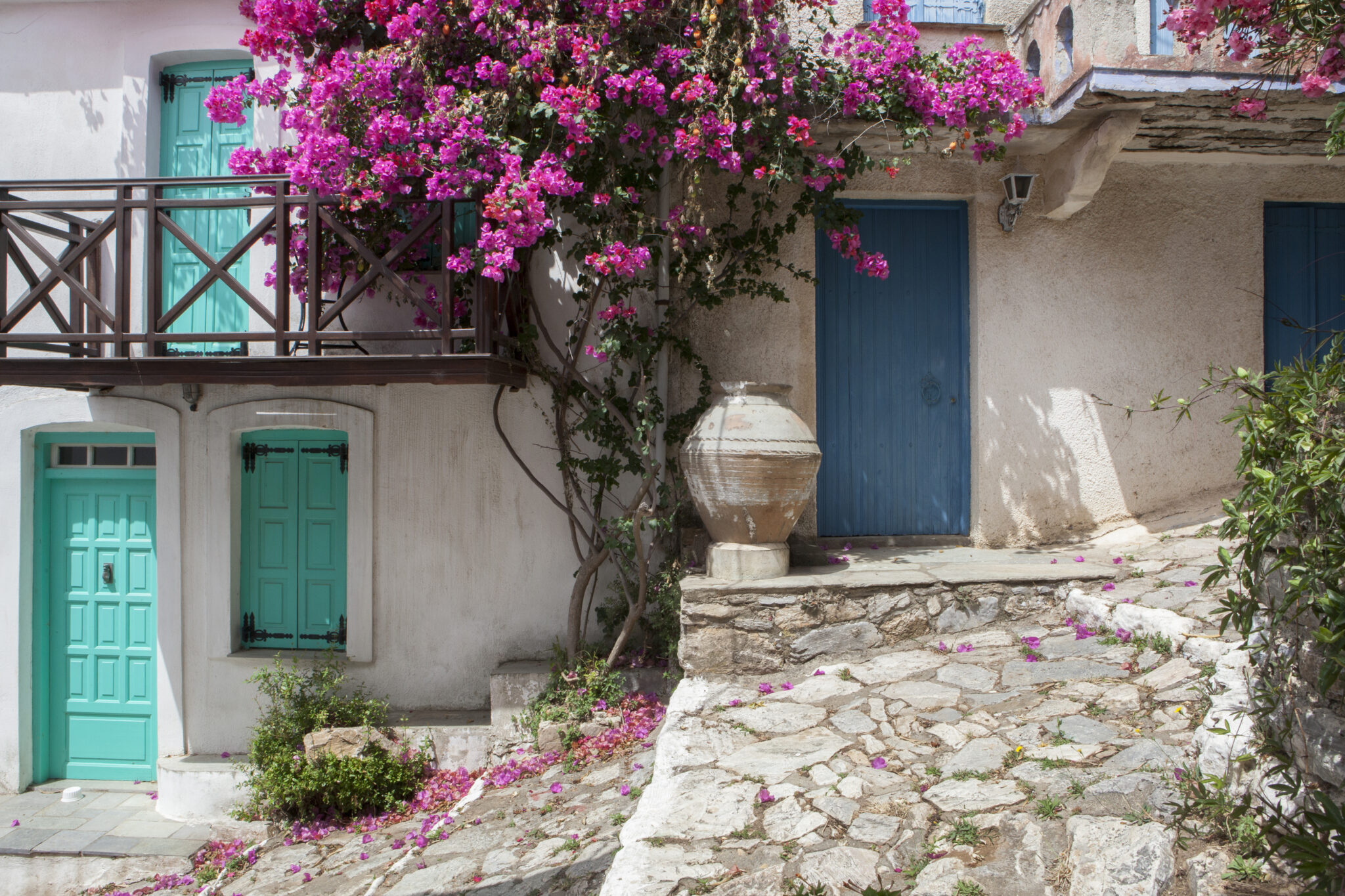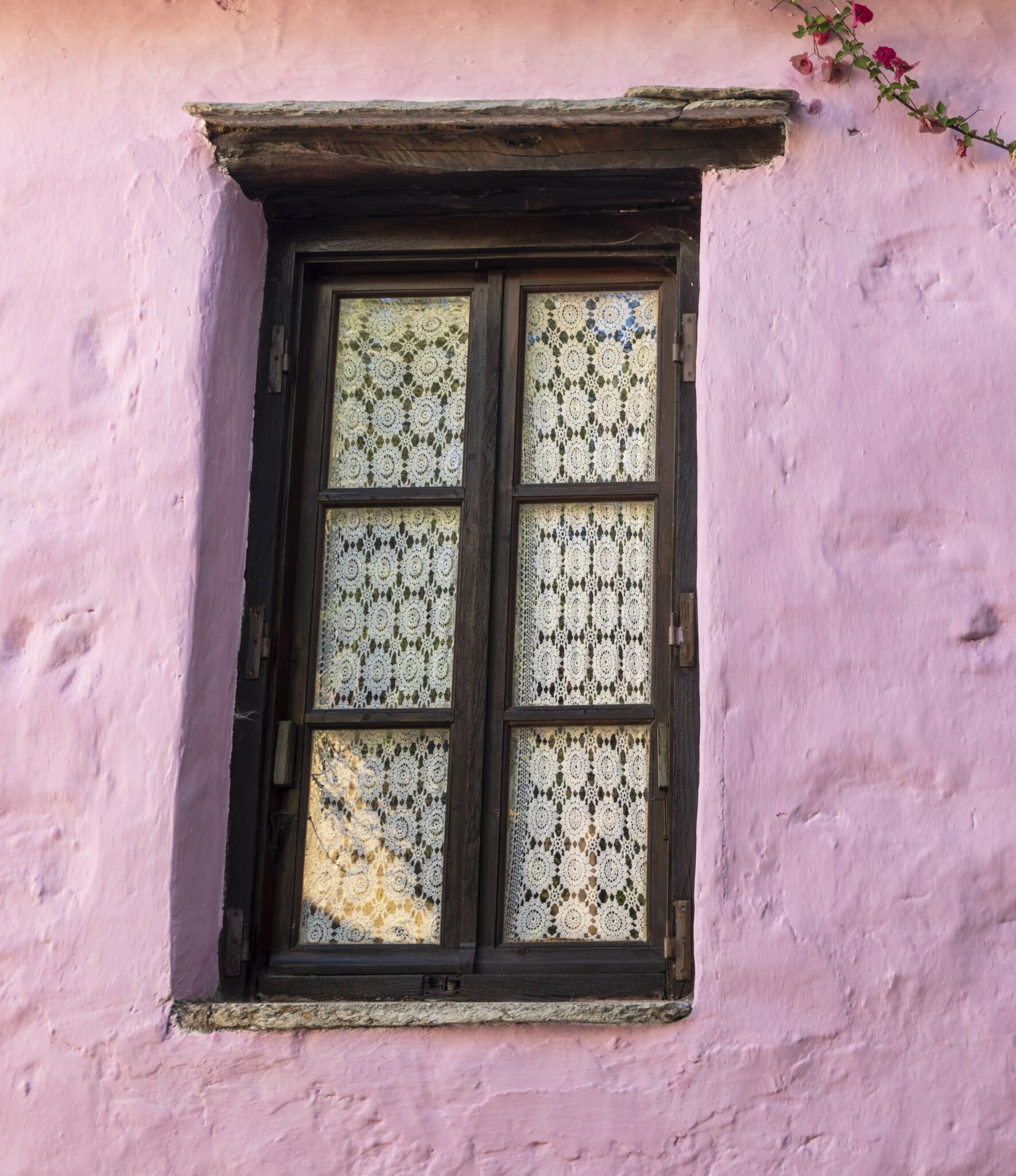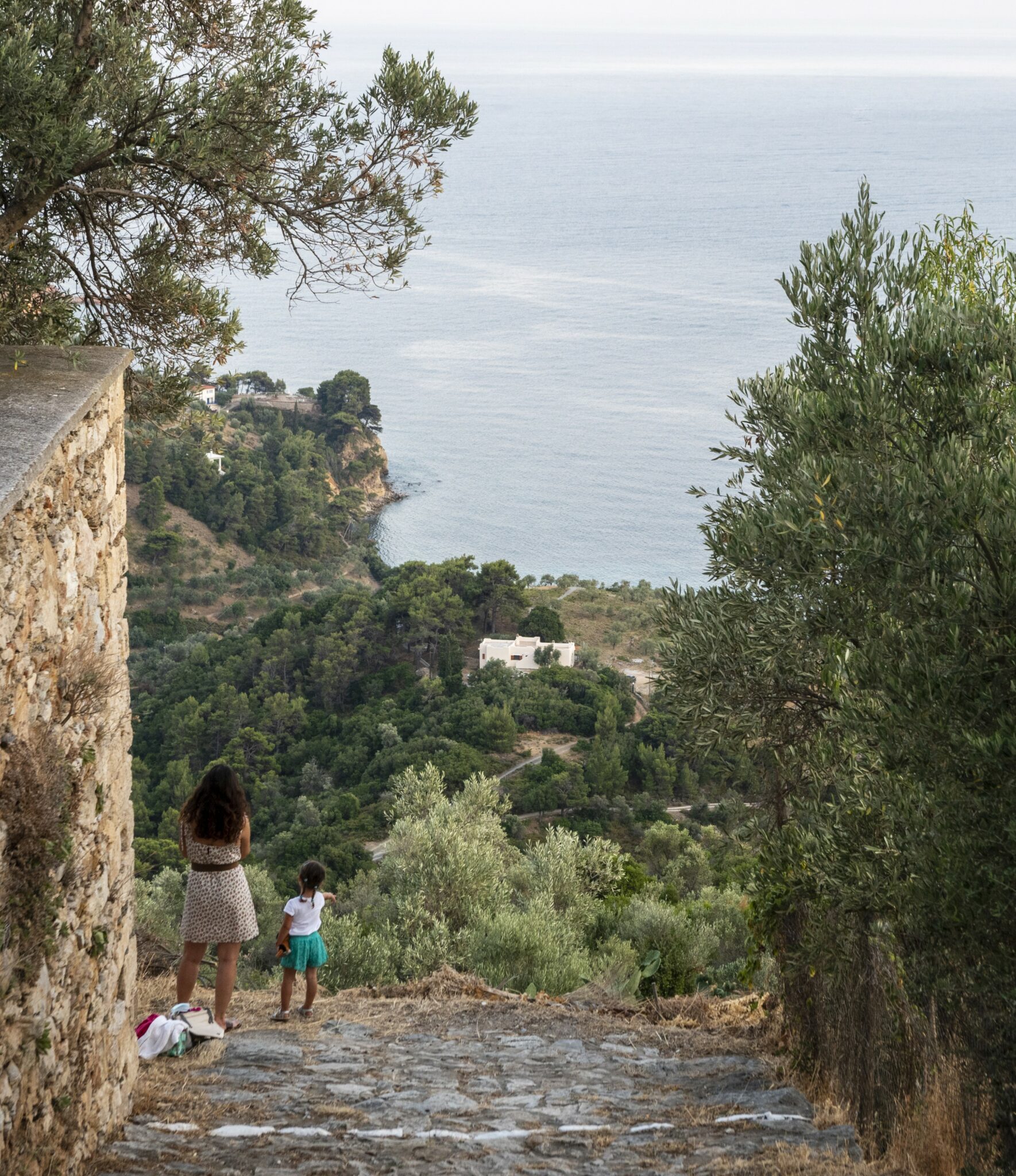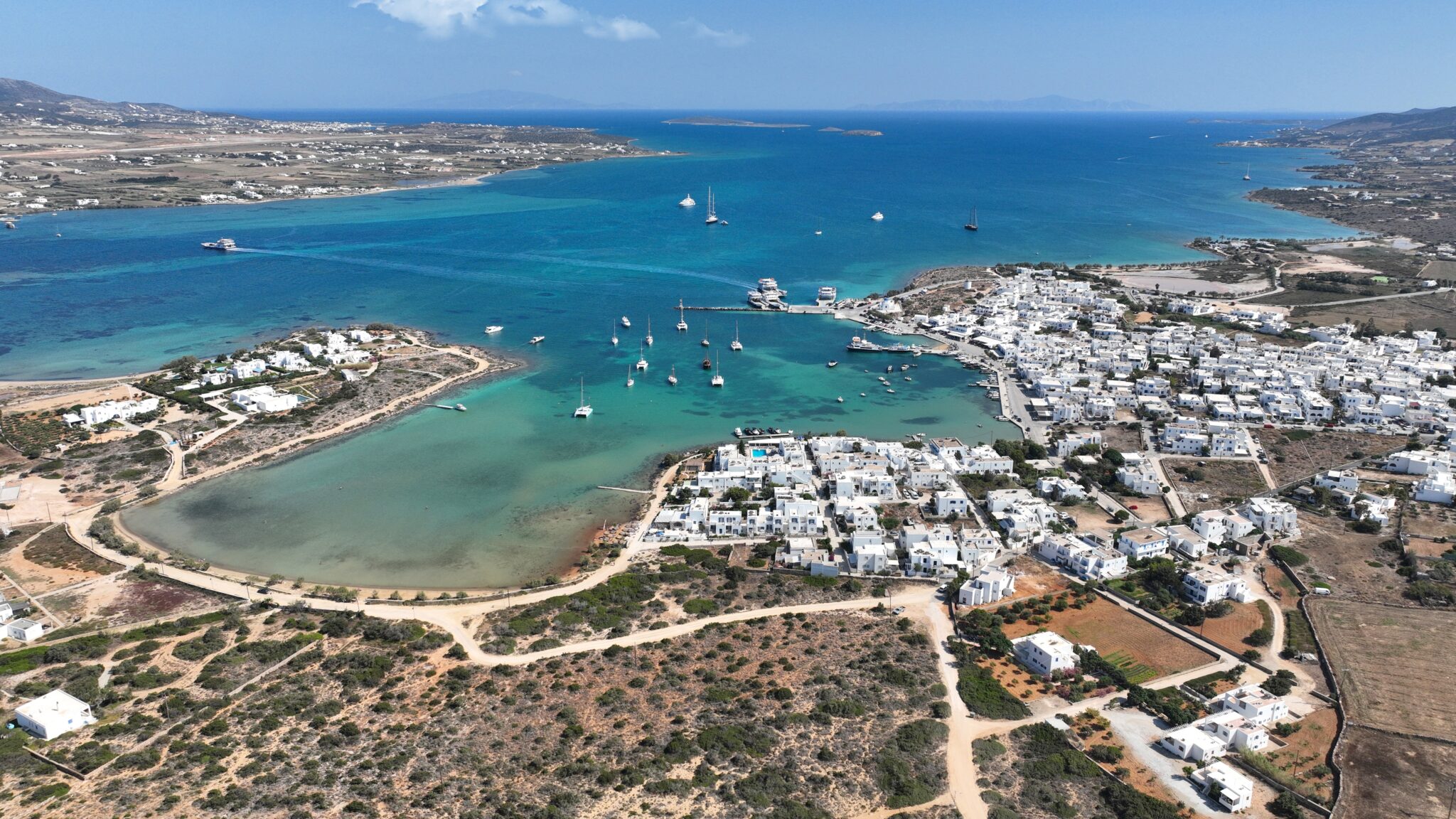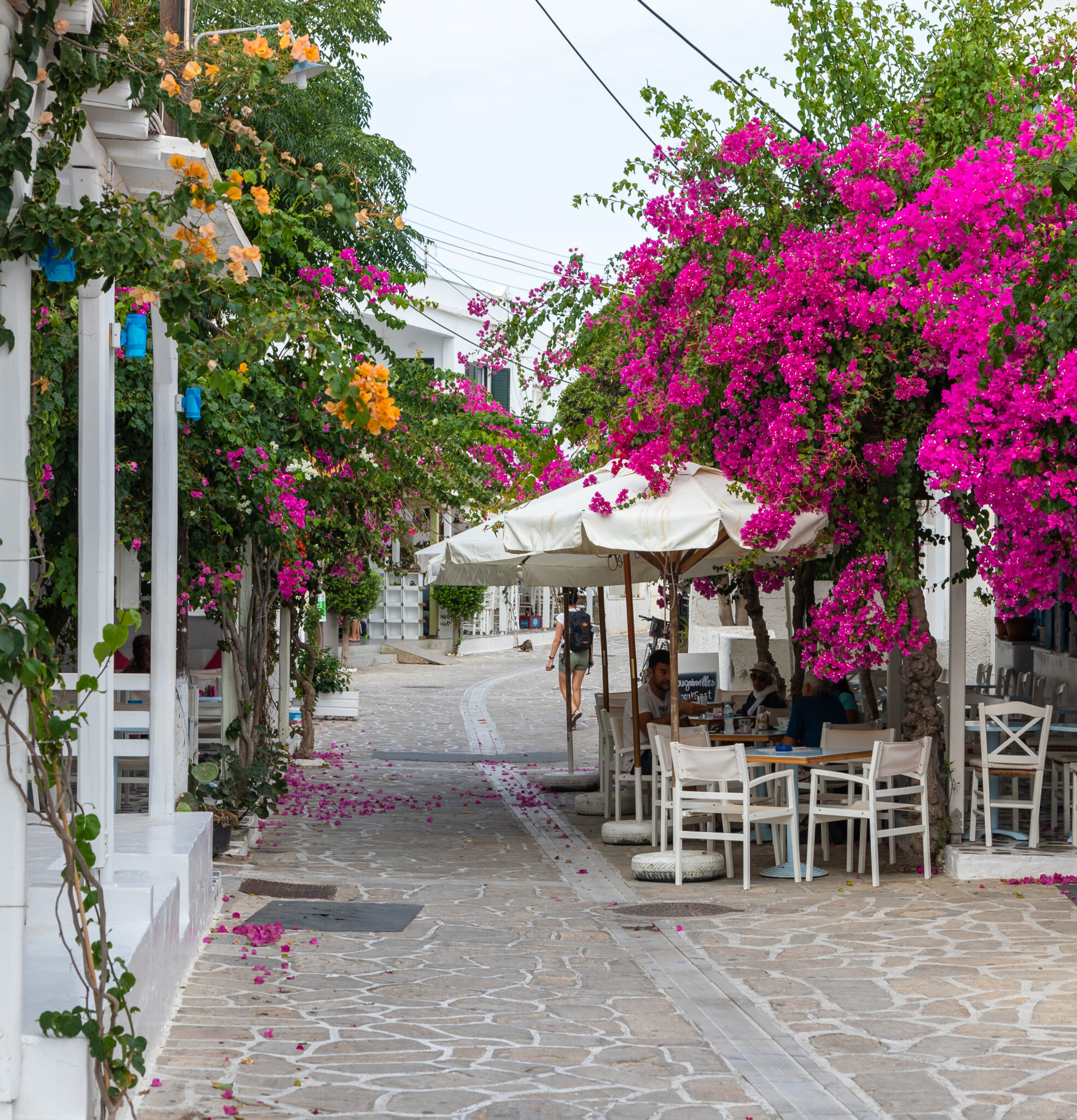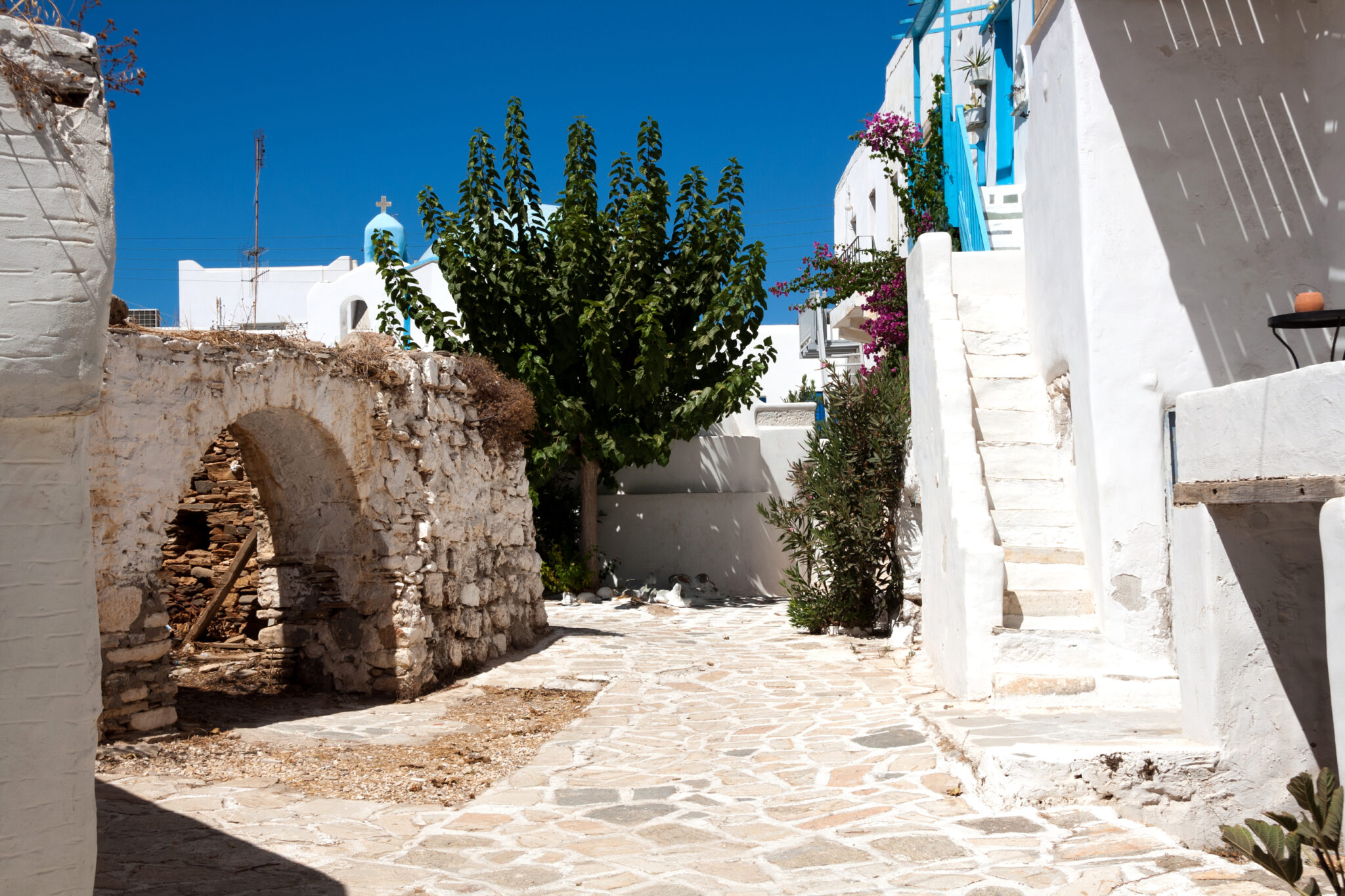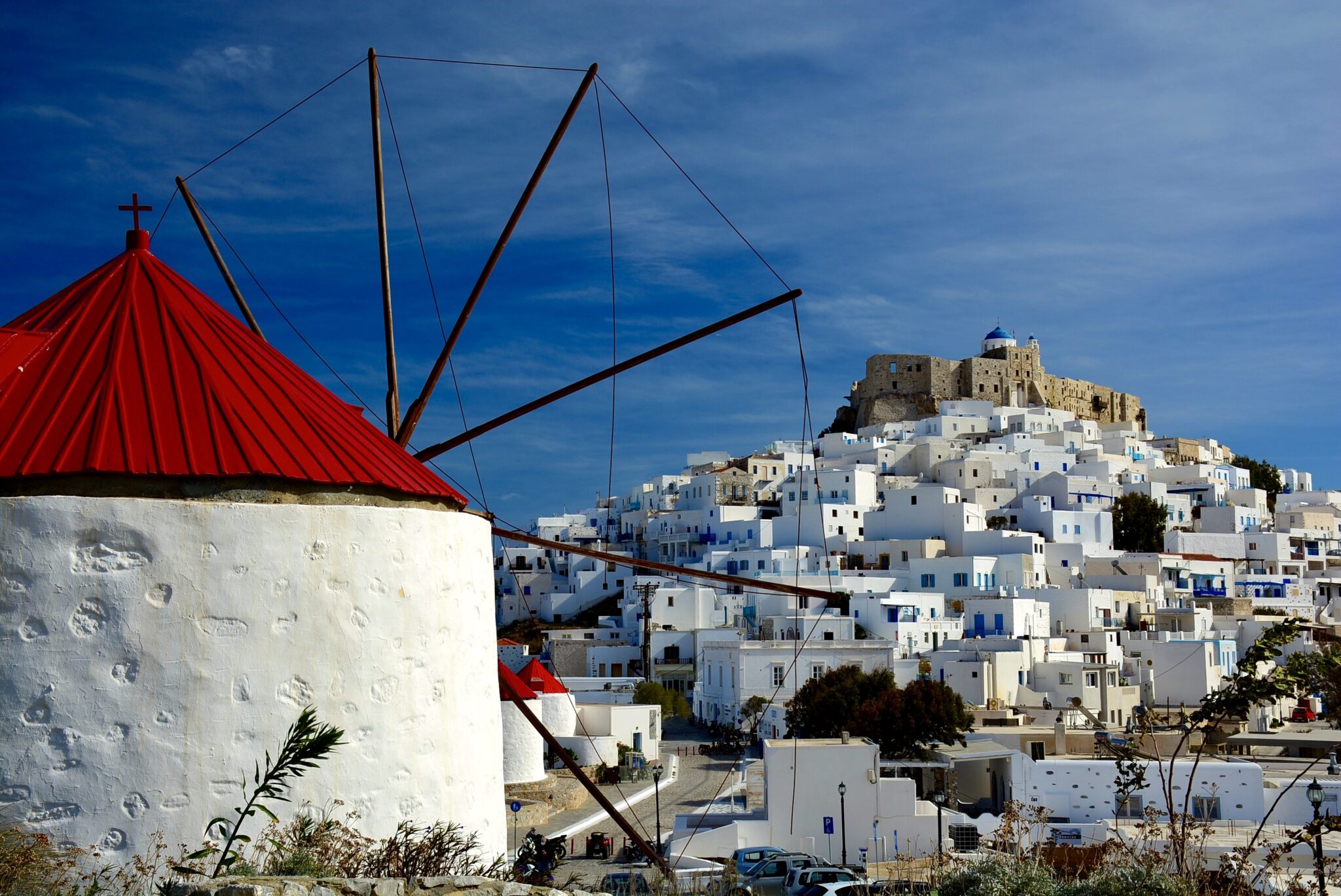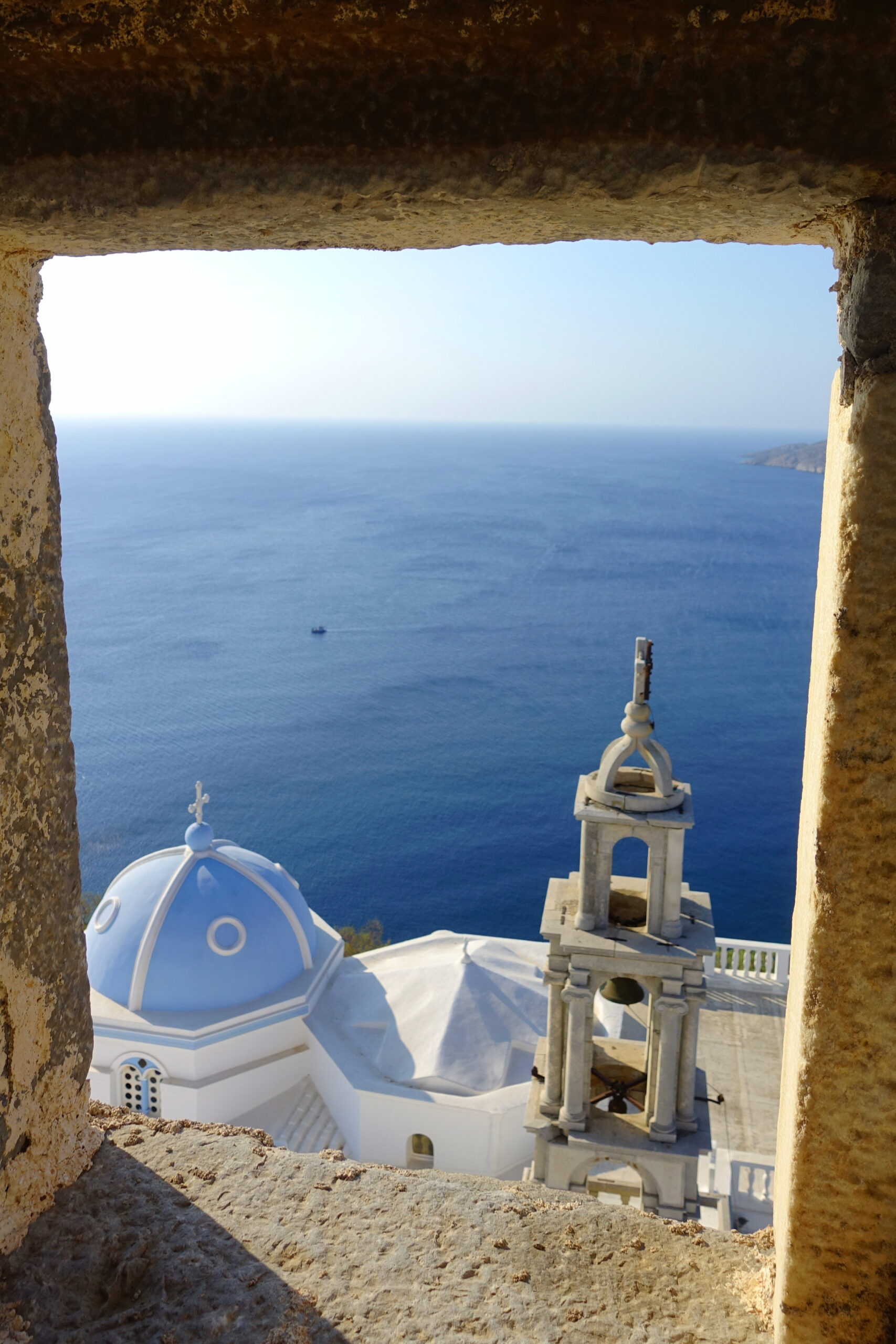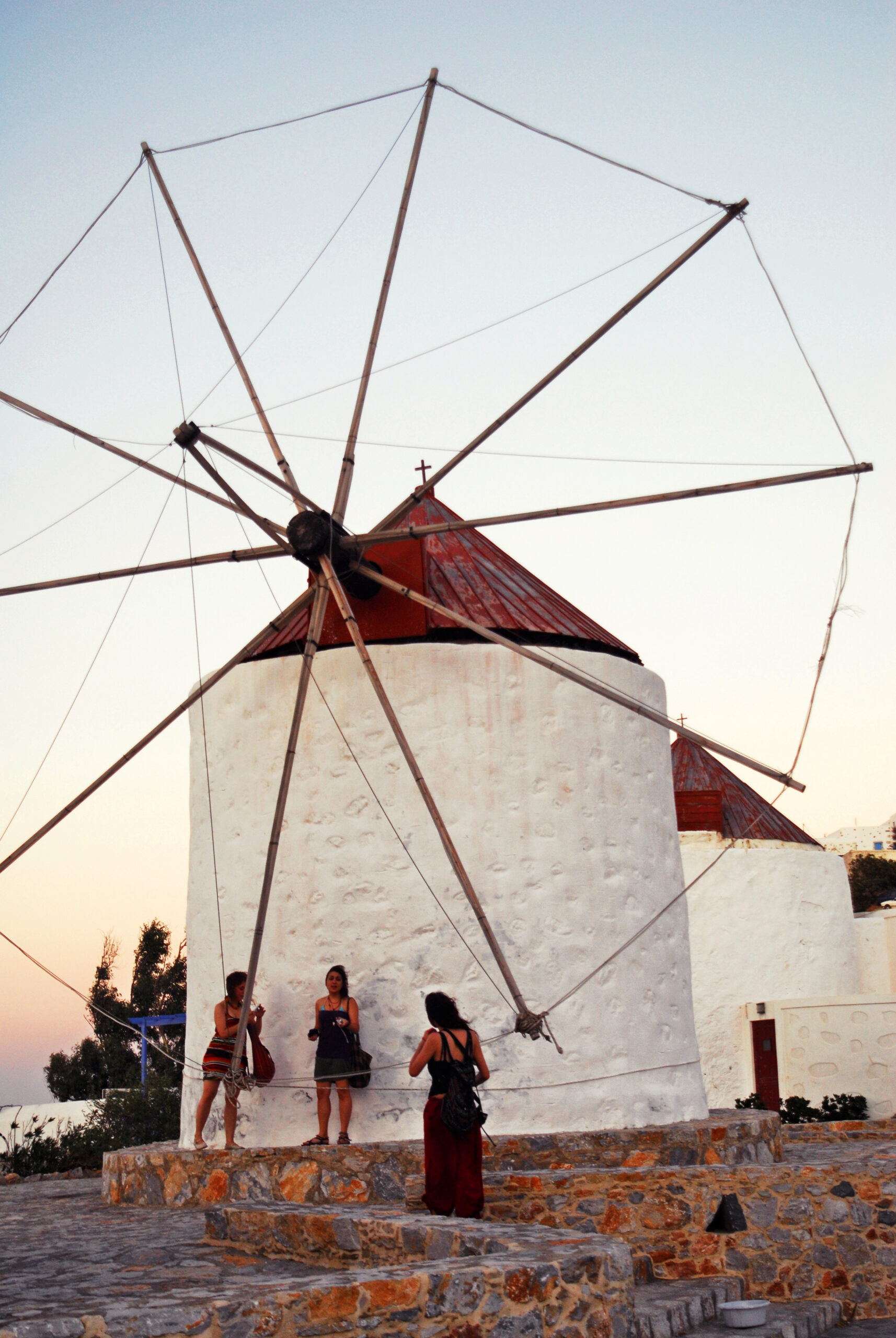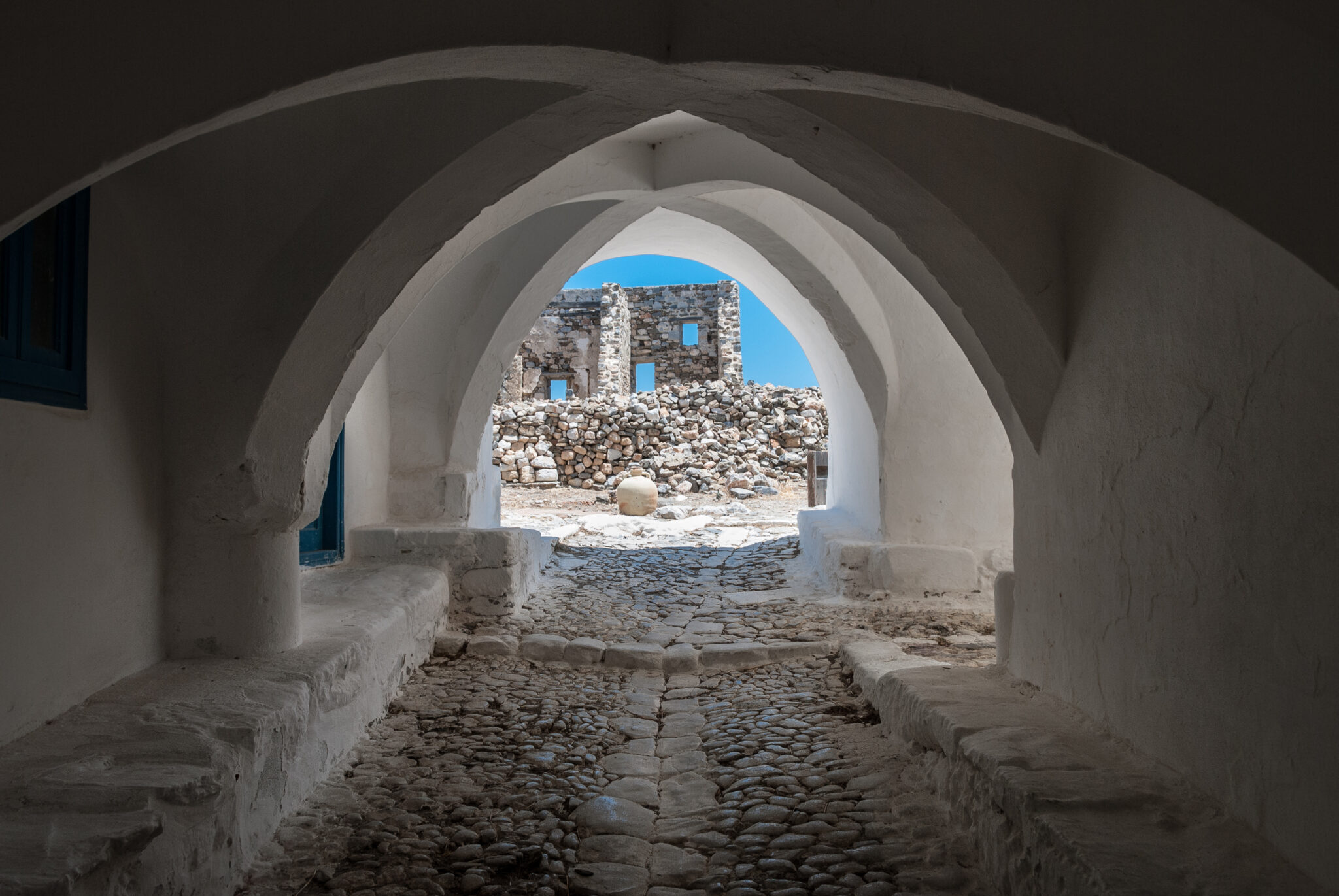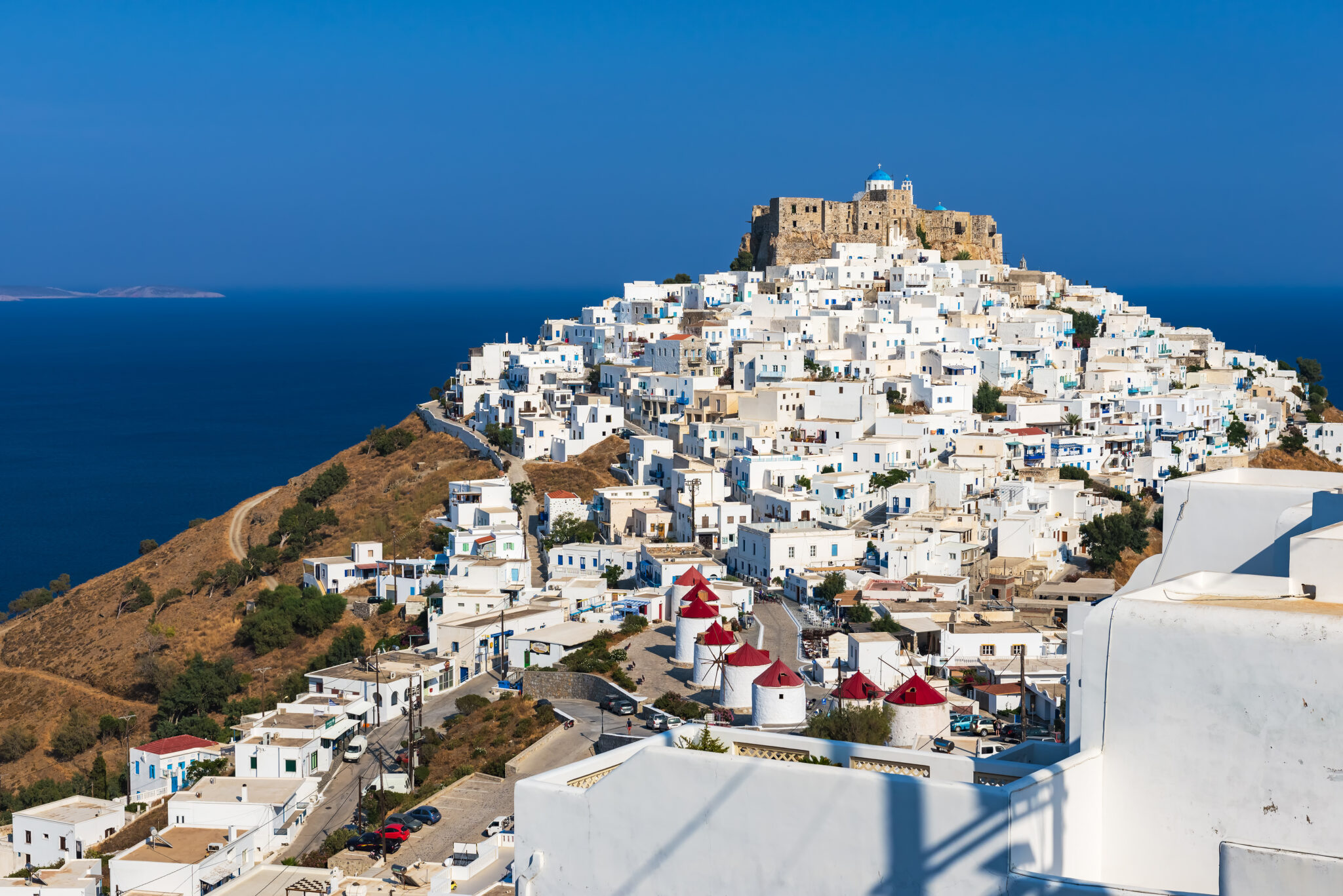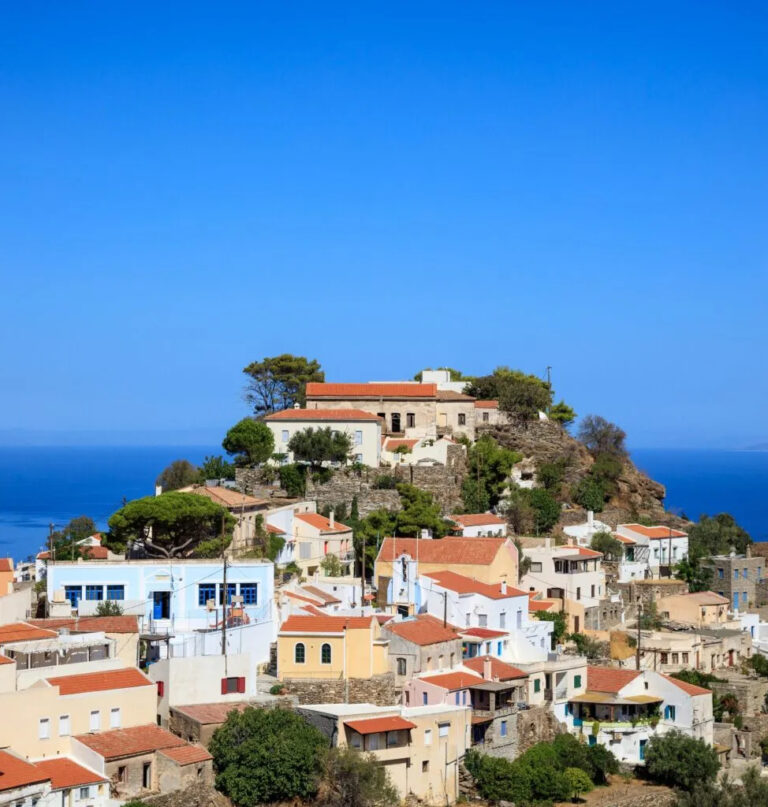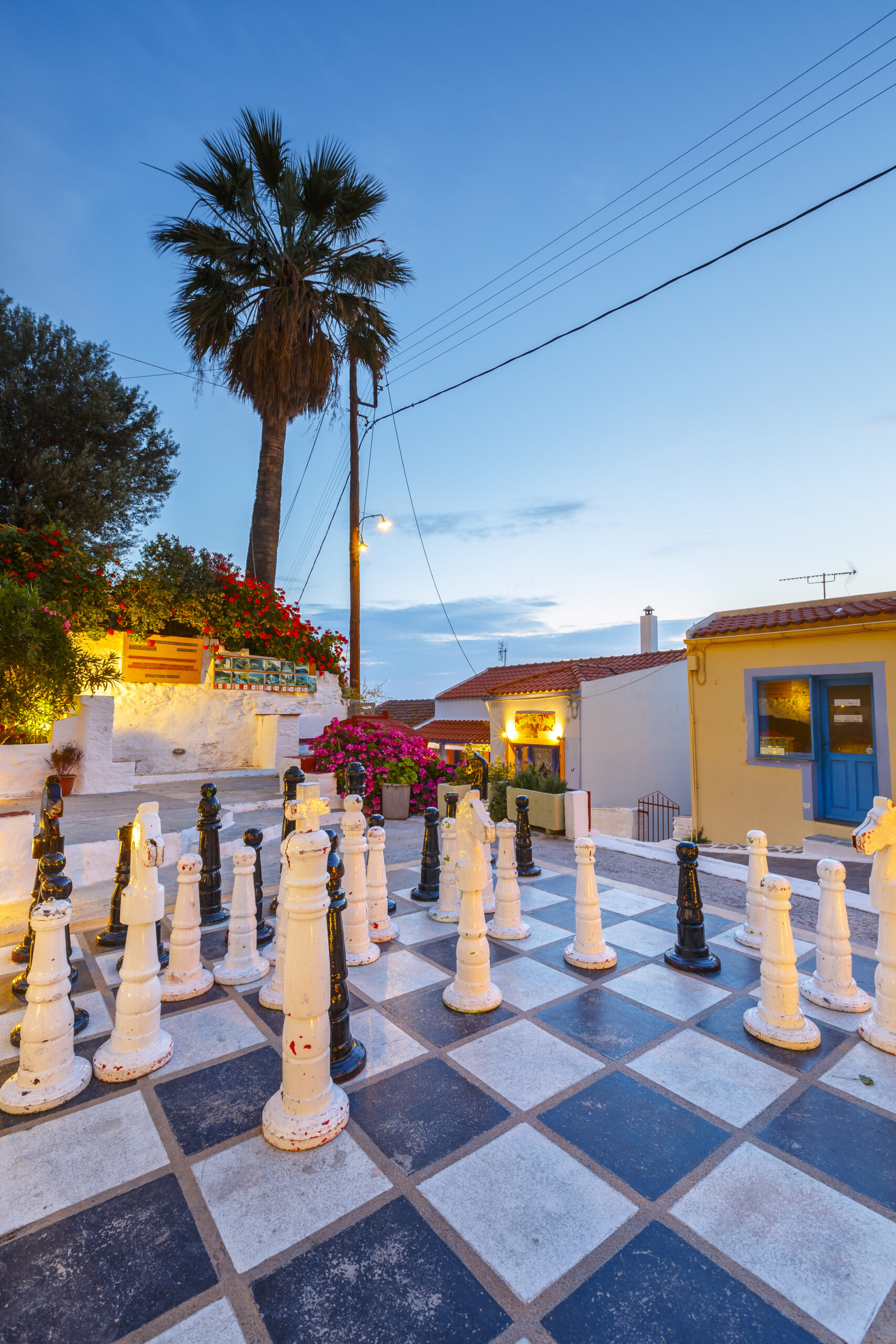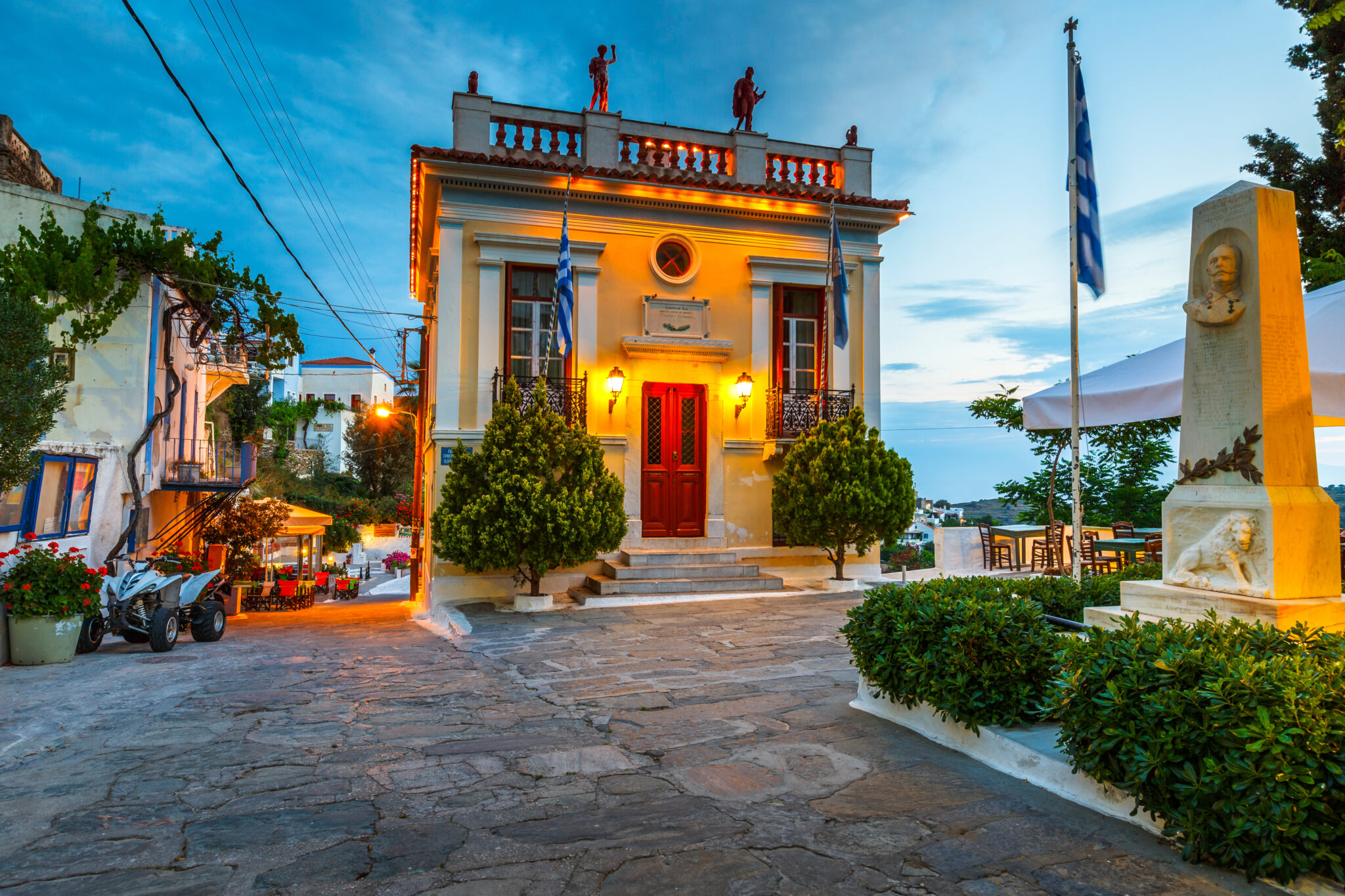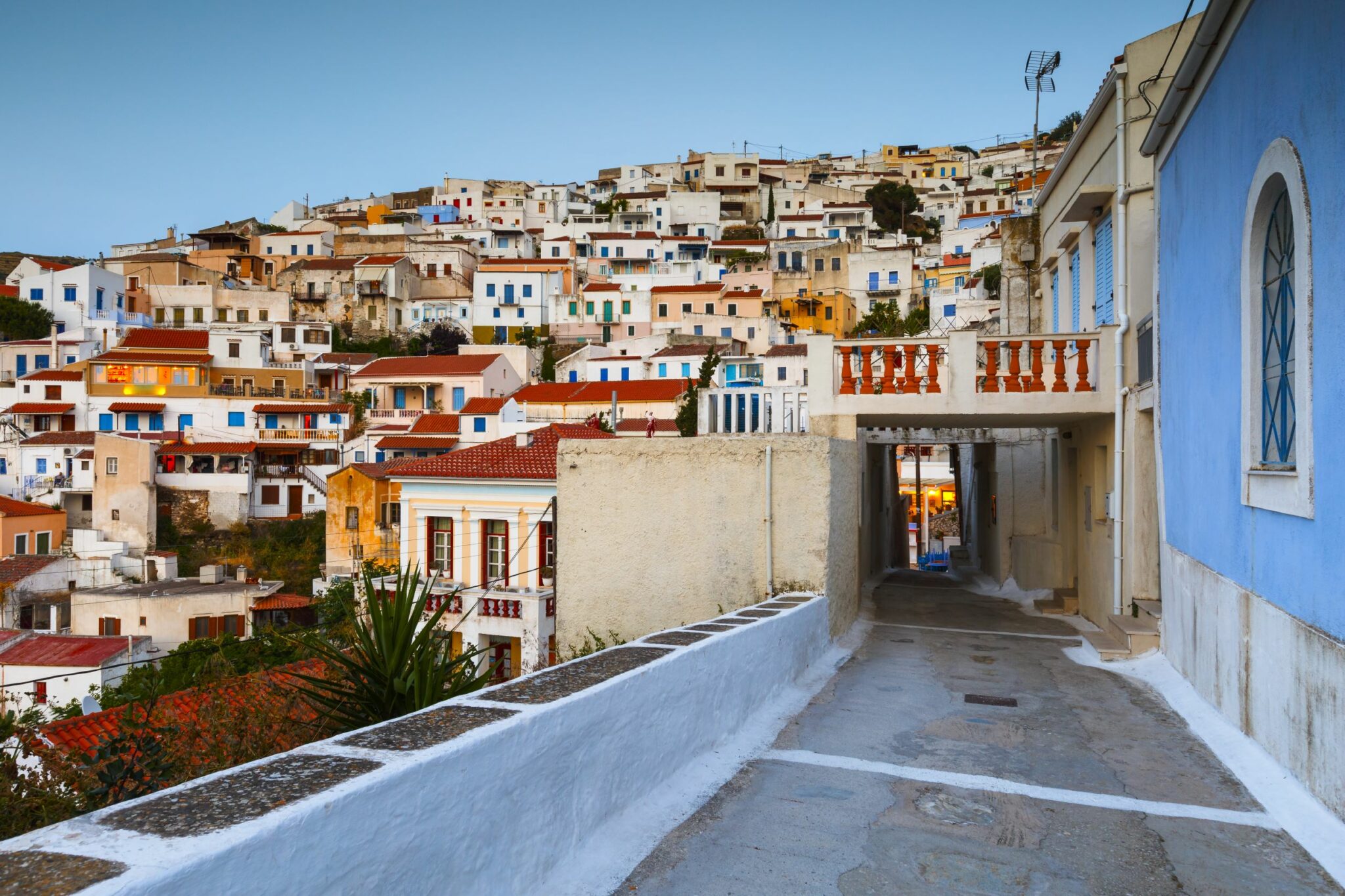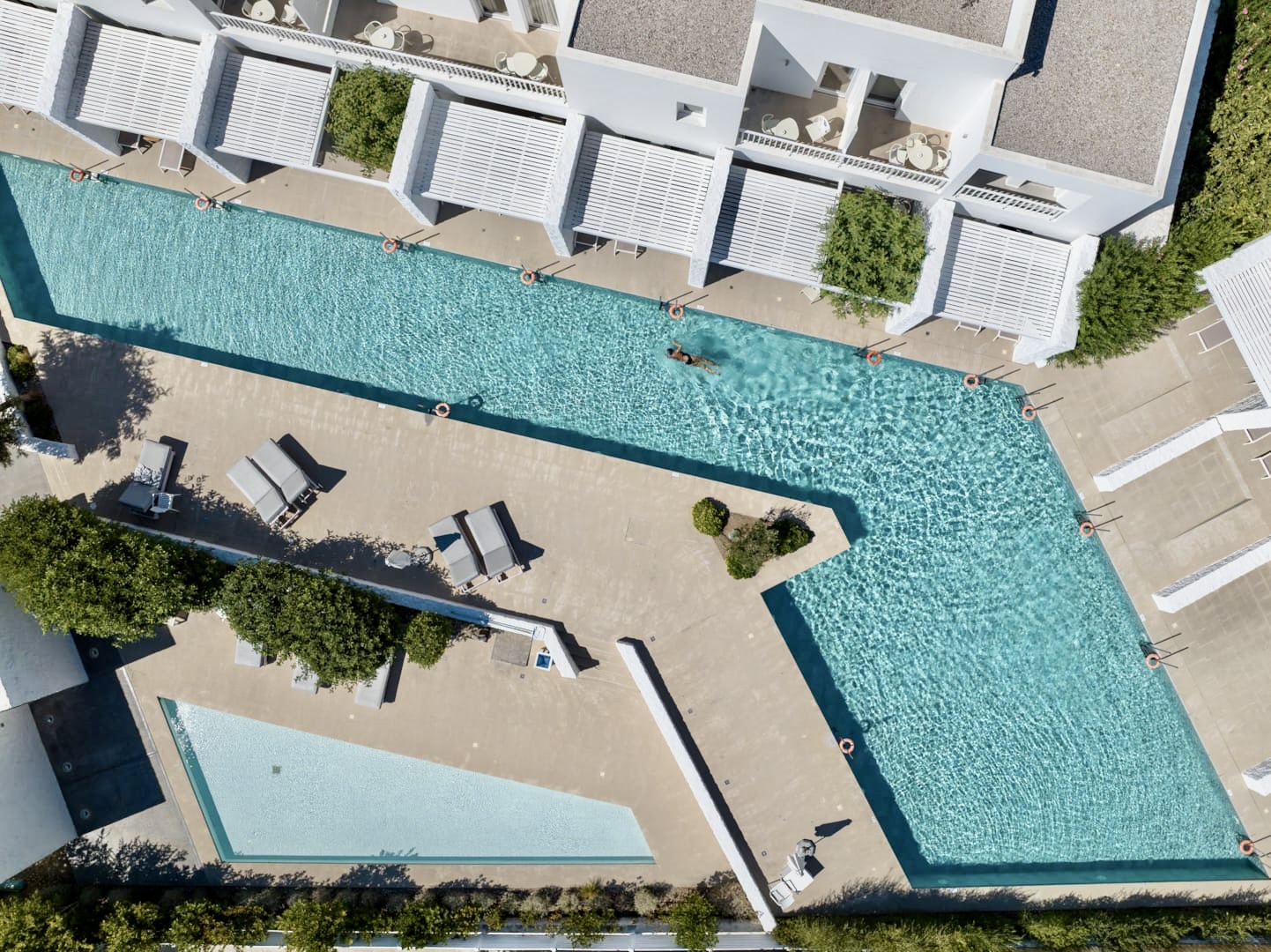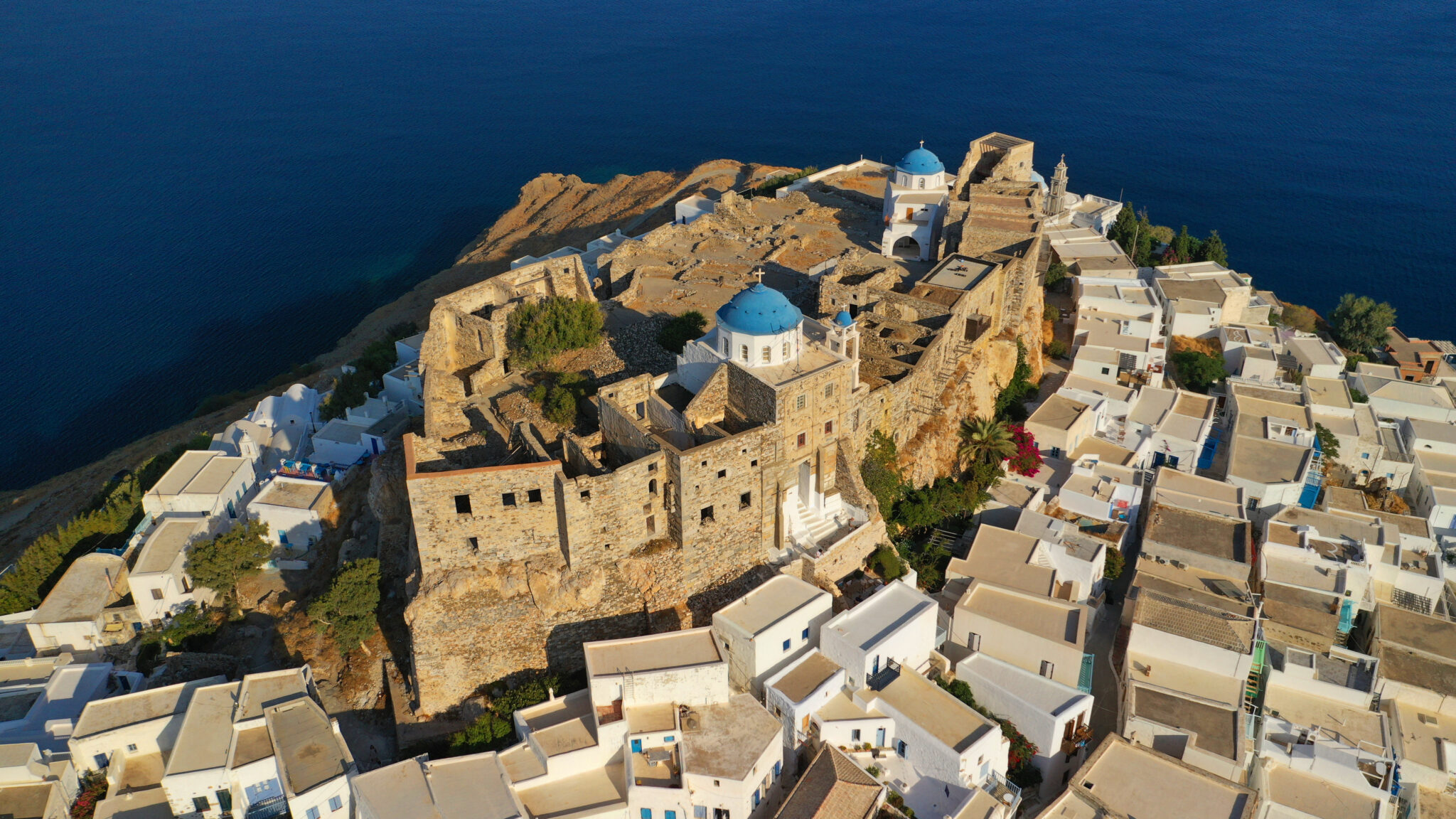The ferry whistles as it enters the harbor, and your first glimpse of island life comes to life—people moving swiftly between parked cars, traditional stores with sun-blistered postcards and tourists in flip flops and beach bags flowing along the streets. These places offer us an idyllic escape to sun-drenched Aegean mornings, the first dive into crystal-clear waters, towels spread on golden sands, and solitary evenings on secluded beaches of the Cyclades or the Dodecanese, alone with nature.
Yet, the Greek islands are far more than this. Each one brims with unique identity and rich history. Architectural gems rooted deeply in the past, fortresses perched above the sea, or monasteries everyone dreams of visiting. Maze-like alleys that intertwine, inviting exploration.
In the Choras – the main settlements – of Greece’s islands beats the genuine pulse of local culture. Despite tourism, many have maintained their authentic charm, making islands like Patmos, Astypalea, or Kea irresistibly enchanting.
A journey through some of Greece’s most captivating Choras offers an idyllic escape, immersing you deeply into the authentic essence of the Cyclades, Dodecanese, and Sporades. Here, history is tangible—from ancient days through medieval times to today.
01
Chora of Patmos
The breathtakingly beautiful Chora of Patmos owes its very existence to the iconic Monastery of Saint John the Theologian, dramatically perched atop the island, seemingly suspended above the sea.
Steeped in Orthodox tradition, Patmos, famously known as the “Island of Revelation,” leaves a profound impression on visitors, compelling many to return repeatedly. While continuously evolving due to tourism, its main settlement retains an irresistible blend of historic charm and contemporary luxury, with quaint houses giving way to elegant villas overlooking the azure Aegean.
Wandering through Hora’s narrow lanes feels like stepping into a fairytale or traveling back through time. En route to the monastery, you’ll pass magnificent mansions such as those of Vardikos, Paleologos, and the Fondis family (known locally as the “House of Lions”), as well as the homes of Valvis-Koutsanellos and Nikolaidis. The picturesque Agia Levia square, truly the heart of this cosmopolitan and historical village, features the venerable Simantiris mansion and the grand Malandrakis estate.
The Monastery itself exudes its own magic. Founded by Saint Christodoulos around 1090 AD, the structure saw significant expansion during Patmos’s 16th and 17th-century maritime prosperity. Highlights include numerous chapels and the famous Katholikon, filled with exquisite Christian art and carved wooden masterpieces. Its museum and renowned library, filled with rare manuscripts, are equally compelling but require special access.
Then, there is the Cave of Revelation—the sacred spot where, according to tradition, John received divine visions in 95 AD. Located between the port and Hora, this revered site draws thousands annually. Just above sits the historic Patmiada School, established in 1713, significantly contributing to Patmos’s cultural legacy.
02
Chora of Alonnisos
For nature enthusiasts, Alonnisos is a haven of lush pine forests, warm, welcoming coves, and breathtaking hiking trails. The charming town of Patitiri, gateway to the island, offers access to the expansive National Marine Park of Alonnisos, Europe’s largest at 2,200 square kilometers.
Upon arrival at Patitiri, you’ll notice the modernized marina—a stark contrast to the romantic atmosphere elsewhere on the island, shaped largely by reconstruction following the devastating 1965 earthquake. Nevertheless, the emerald bay nearby is utterly dreamy, perfect for quick dips near the town center.
Most visitors immediately tour the Marine Park, a spectacular haven for marine life and dolphins frequently seen approaching boats—an unforgettable experience, especially for families. Stop by the MoM Information Center dedicated to the Mediterranean Monk Seal, deepening your appreciation of the island’s ecological significance.
Yet, the true jewel of Alonnisos is undoubtedly the Old Village (Palio Horio), perched at its highest point—a mesmerizing medieval citadel. Despite changes over time, especially since 1965, it remains a vibrant, living museum of traditional Sporades life.
Wander its labyrinthine cobbled streets, climb mysterious stairways, browse charming shops, and admire flower-filled courtyards. Don’t miss the exquisite 17th-century Church of Christ.
03
Chora of Antiparos
Beloved by campers, nightlife enthusiasts, and free spirits, Antiparos retains its bohemian charm while evolving into a more polished destination. Just a five-minute ferry ride from Paros, Antiparos’s quaint Chora is compact but rich in character.
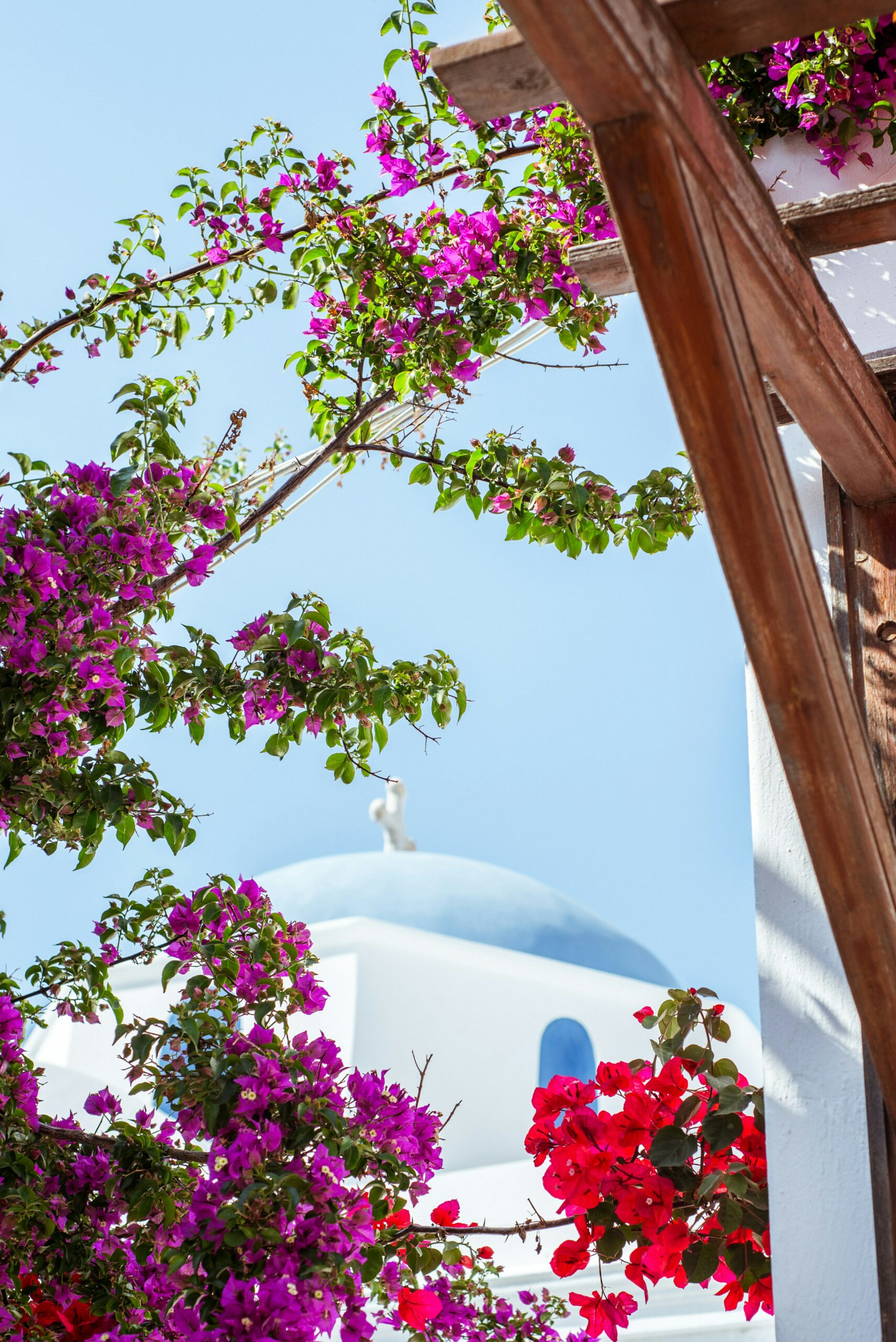
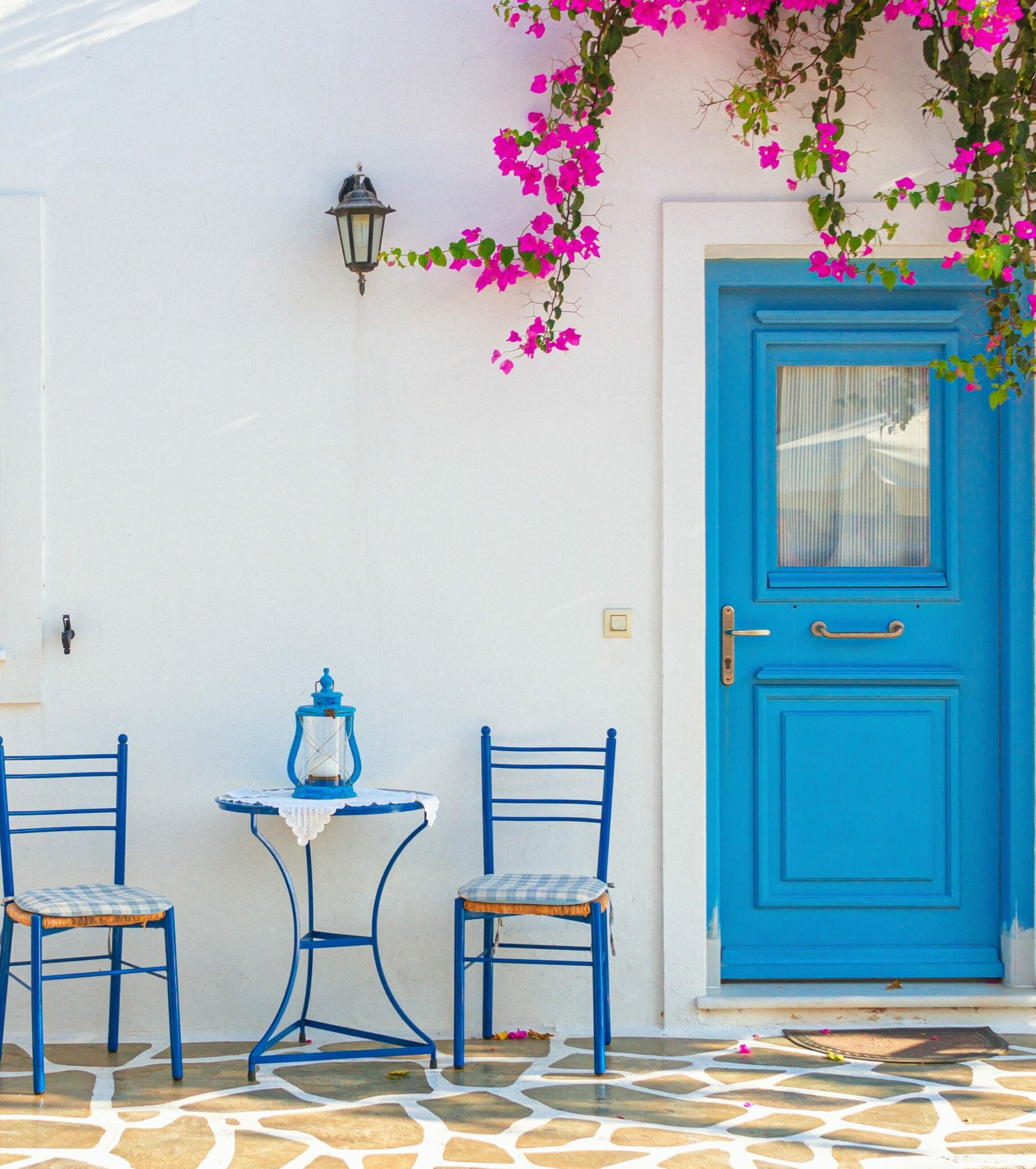
Its main street, lined with fishing boats on one side and traditional tavernas on the other, leads to an enchanting pedestrian walkway—one of Greece’s loveliest island paths. Surrounding beaches such as Psaraliki and Kaloudia offer relaxation, while venturing further rewards with more secluded coves.
Visit the 15th-century Venetian Castle in late afternoon for comfort and spectacular sunset views. History lovers will enjoy the remaining tower foundations and surrounding ruins. Don’t skip the charming Arodo bookstore, well-stocked with contemporary and classic reads.
04
Chora of Astypalea
Astypalea’s stunning Chora, rising majestically between Pera Gialos and Livadi, resembles a butterfly in the Aegean. Its picturesque windmills—now home to a multilingual library and information center—greet visitors in the main square.
Here, whitewashed houses ascend steep slopes, intersected by winding paths and hidden courtyards, crowned by the imposing Venetian Querini Castle. Visit at sunset for unforgettable vistas. Nearby, the Archaeological Museum at Pera Gialos reveals treasures dating back to prehistoric times. Enjoy panoramic views from Panagia Portaitissa Church and vibrant nightlife beneath the illuminated castle walls.
05
Chora of Kea (Tzia)
Closest of the Cyclades to Attica, Kea is ideal for short escapes. A mere hour from Lavrio, it captivates with beautiful beaches, scenic hiking trails, and distinguished architecture. The capital, Ioulida, exudes aristocratic charm with its winding alleys, flower-filled balconies, and historic landmarks.
Start at the grand Ziller-designed Town Hall (1902), then explore neighborhoods reflecting past social hierarchies: elegant mansions in Kastro, modest dwellings in Katohori and Mesada, and simpler homes in Panohori, reflecting agricultural roots.
Visit the Archaeological Museum to delve deeper into Kea’s rich past, admire remnants of ancient walls and the Venetian Castle (built in 1210), and pay respects at Agios Charalambos Church. The atelier and home of celebrated artist Alekos Fassianos, now open to visitors, further enriches your exploration with his colorful artwork decorating the town’s covered arcades.
Read more:
Kea’s Insider’s Guide
The Island Hopping Series: Naxos-Paros-Antiparos
Astypalea: The Overlooked Jewel
Alonissos: The Quiet Isle
Patmos’ Timeless Appeal Explained




